- Sector 49, Noida, Uttar Pradesh 201301
- nestaphysio@gmail.com

'Frozen shoulder' is a disease of unknown cause where the shoulder becomes painful and develops restricted movement. It occurs when the strong connective tissue surrounding your shoulder joint (called the shoulder joint capsule) becomes thick, stiff, and inflamed. frozen shoulder goes through three phases - phase of pain followed by phase of stiffness followed by phase of resolution - approximately 3 months each.
Research suggests that 90% of patients responds very well to the conservative management which involves non operative options such as medication, steroid injections, and physiotherapy.
With our current practice, we believe our 70% patients recover with only physiotherapy, 20% with physiotherapy + injection and rest 10% undergo surgery for various reasons.
We at nesta physiotherapy, also use advance machines like Shoulder CPM (CONTINUOUS PASSIVE MOTION) which increases ROM in most sophisticated and painless way. We are the exclusive centre to provide this service in Noida.
Frozen shoulder is a debilitating condition. The pain and stiffness in the shoulder joint makes it difficult to perform daily activities like wearing clothes or do household chores. If at-home treatments like rest and pain killers don't help, you should immediately consult a physiotherapist trained in shoulder conditions.

Osteoarthritis (OA) is a degenerative joint condition that occurs when the cartilage cushioning the bones wears down over time. It commonly affects the knees, hips, hands, and spine, leading to pain, stiffness, swelling, and reduced mobility. OA can be caused by aging, joint injuries, obesity, or genetic factors.
Physiotherapy is an effective treatment for osteoarthritis, helping to reduce pain, improve joint mobility, and strengthen surrounding muscles. It includes manual therapy, stretching, and low-impact exercises to enhance flexibility and prevent stiffness. Strengthening exercises support the affected joints, reducing stress and improving function. Techniques like ultrasound, TENS therapy, and heat/cold application help manage pain and inflammation. Posture correction and gait training ensure better movement and minimize joint strain.
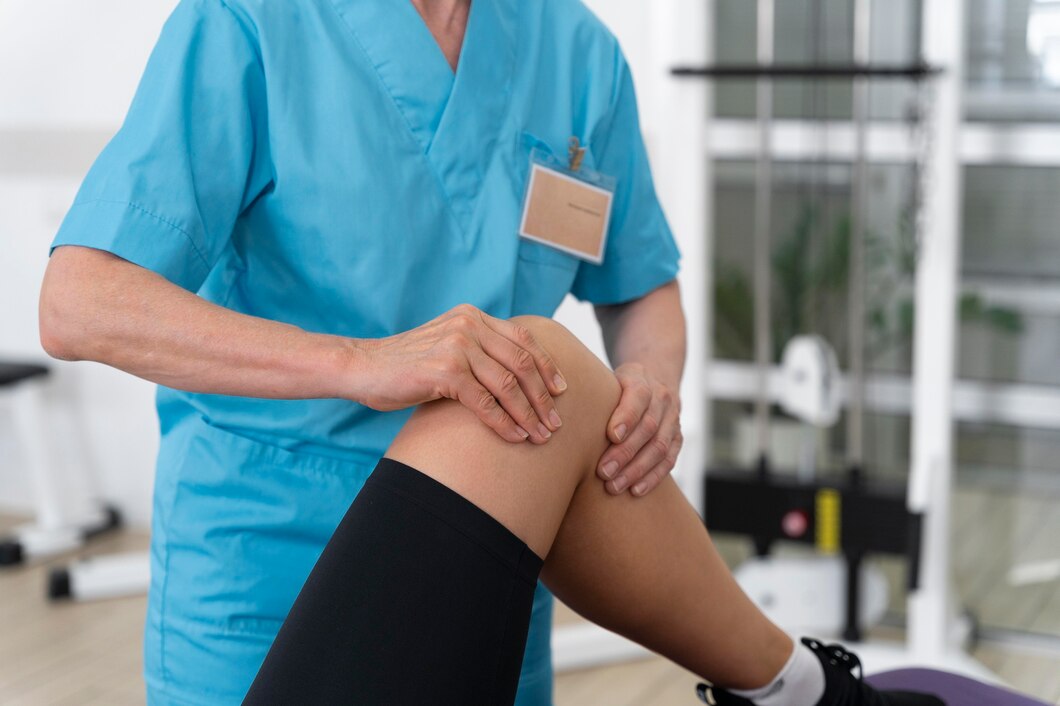
An ACL (Anterior Cruciate Ligament) injury is a tear or sprain of the ACL, a key ligament in the knee that connects the thigh bone (femur) to the shin bone (tibia). It is one of the most common knee injuries, often occurring during sports that involve sudden stops, jumping, or changes in direction, such as football, basketball, and soccer.
An ACL injury is essential for recovery, focusing on reducing pain, restoring mobility, and strengthening the knee. The rehabilitation process typically progresses through phases, starting with pain management and gentle range-of-motion exercises. Gradually, strengthening exercises for the quadriceps, hamstrings, and core are introduced to improve knee stability. Balance and proprioception
training help regain coordination, while later stages include sport-specific drills to prepare for full activity. A structured rehab program usually lasts 6-9 months, ensuring a safe return to daily activities and sports. Proper adherence to physiotherapy significantly reduces the risk of reinjury and improves long-term knee function.
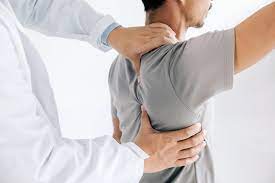
A rotator cuff injury is damage to the group of four muscles and tendons that stabilize the shoulder and help with movement. It commonly occurs due to repetitive overhead activities, aging, or trauma, such as a fall or heavy lifting.
a rotator cuff injury focuses on reducing pain, improving mobility, and strengthening shoulder muscles. Initial treatment includes rest, ice, and gentle range-of-motion exercises to reduce stiffness. Postural correction and stretching help prevent further strain. Advanced rehabilitation includes functional movements and sport-specific exercises to restore full shoulder function. A structured rehab program ensures a gradual and safe return to daily activities, reducing the risk of reinjury.
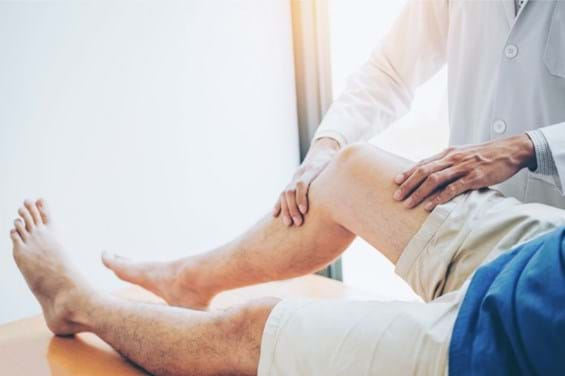
Chondromalacia Patellae, also known as Runner’s Knee, is a condition where the cartilage under the kneecap softens and wears down, leading to knee pain, swelling, and discomfort. It is commonly caused by overuse, improper knee alignment, muscle imbalances, or injury. Symptoms include pain while climbing stairs, squatting, running, or sitting for long periods.
Physiotherapy helps by strengthening the quadriceps, hamstrings, and hip muscles, improving knee stability. Stretching, ice therapy, TENS, and manual therapy help reduce pain and inflammation. Activity modification and knee bracing can also provide relief. A well-planned rehabilitation program ensures faster recovery and prevents future knee issues.

The meniscus is a soft, rubber-like C-shaped cushion in between the bones of the knee. There are two of them - one on the inner side (medial meniscus) and one on the outer side (lateral meniscus). These structures act as shock absorbers.
They share the load on the knee and protect the cartilage cap over the knee bones. Most often, the meniscus tears during a sudden motion in which your knee twists while your foot stays fixed on the ground. The tear frequently occurs while playing sports. These traumatic tears happen in young adults. People whose cartilage wears down (due to age or arthritis) can tear a meniscus from a motion as simple as stepping on an uneven surface.
Physiotherapy has been proved to be an effective treatment option for degenerative meniscus tears due to arthritis. The aim of treatment is to reduce joint pain and improve knee function.
For small tears with less pronounced symptoms, physiotherapy is a great approach to start with. It helps in reducing secondary quadriceps atrophy resulting in weak and unstable joint.
Young athletic population or people with larger traumatic tears will need surgery immediately and physiotherapy will be considered post operatively.
Whether you do physiotherapy as part of a conservative treatment or to heal after surgery, the goal of rehabilitation is the same, to get back the knee range of motion, strength, and control.
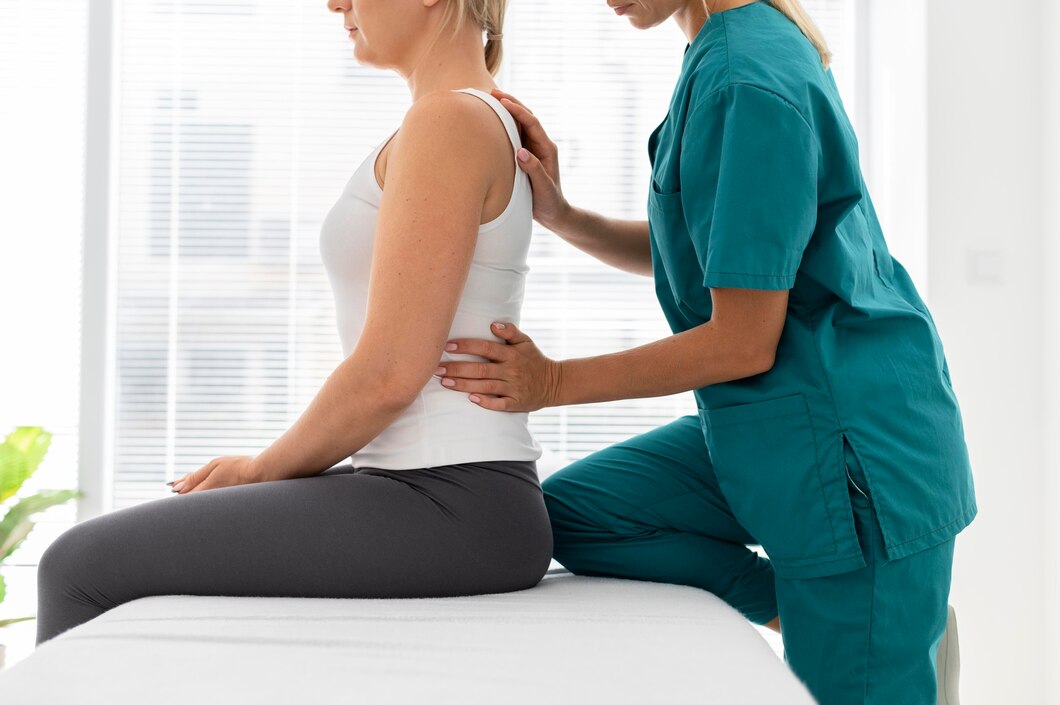
Sciatica is a condition caused by compression or irritation of the sciatic nerve, the longest nerve in the body, which runs from the lower back through the hips, buttocks, and down each leg. It is commonly due to a herniated disc, spinal stenosis, or muscle tightness (like piriformis syndrome) pressing on the nerve.
Physiotherapy for sciatica aims to alleviate pain, promote healing, and enhance mobility. The therapy begins with gentle stretches targeting the lower back, hamstrings, and hip muscles to reduce pressure on the sciatic nerve.
Some of the most common approaches to physiotherapy for sciatica provided at our center include:

Text Neck/Tech Neck is a condition caused by prolonged use of mobile phones, tablets, and computers, leading to neck pain, stiffness, and poor posture. Constant forward head posture puts excessive strain on the neck muscles and spine, causing headaches, shoulder pain, and reduced mobility.
Physiotherapy helps by strengthening neck and shoulder muscles, improving posture, and relieving pain through manual therapy, stretching, and ergonomic corrections. Simple changes like holding devices at eye level, taking frequent breaks, and practicing neck exercises can prevent worsening symptoms. Early intervention with proper posture and physiotherapy can effectively manage and prevent Tech Neck.

PIVD (Prolapsed Intervertebral Disc) occurs when a spinal disc bulges or herniates, pressing on nearby nerves, causing back pain, numbness, or weakness. It is commonly caused by aging, poor posture, heavy lifting, or injury. Symptoms vary but often include radiating pain in the legs or arms.
Physiotherapy helps through pain management techniques like heat therapy, TENS, and manual therapy. Strengthening core and back muscles improves spinal stability, while stretching exercises enhance flexibility. Posture correction and lifestyle modifications prevent further strain. A well-structured rehab plan can reduce pain, restore mobility, and help avoid surgery.
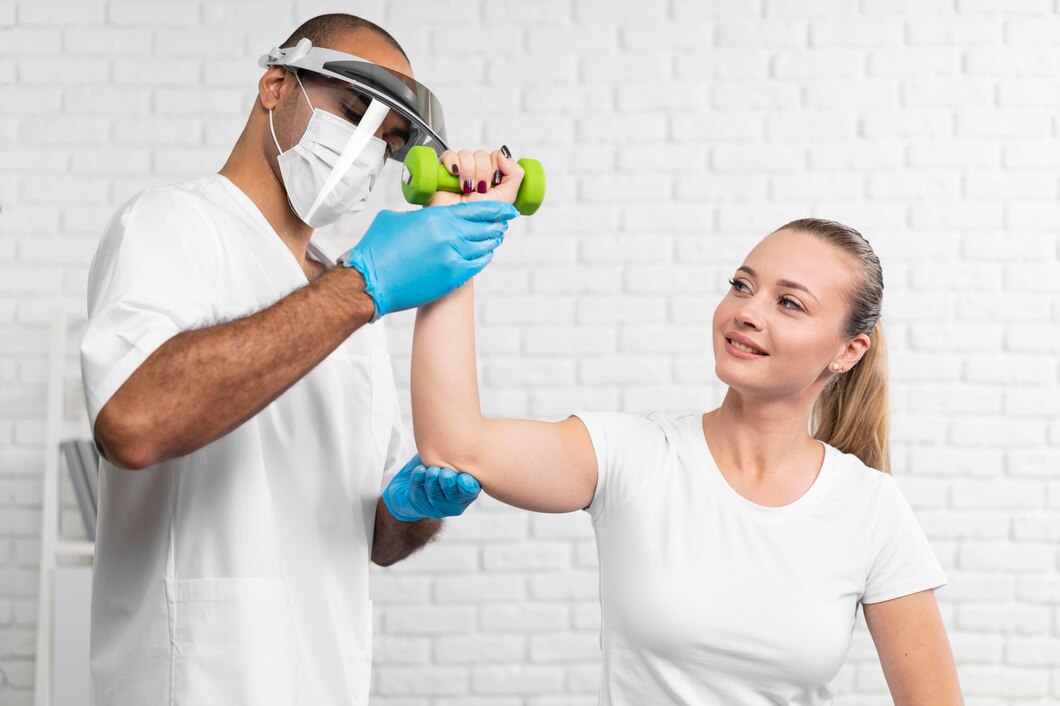
Tennis elbow, also known as lateral epicondylitis, is a condition that can result from overuse of the muscles and tendons in the elbow. Tennis elbow is often linked to repeated motions of the wrist and arm causing micro tears in the common extensor tendon.
Despite its name, most people who get tennis elbow don't even play tennis. Some jobs that involve repeated movements can lead to tennis elbow which include plumbers, painters, carpenters etc. In some case, tennis elbow may have various other secondary causes too, like weak shoulder muscles, cervical spine pathology etc. However, often tennis elbow has no clear cause.
PT is one of the most promising treatment option for tennis elbow. We help you find the possible reason for tendon irritability, devise targeted rehab program and suggest activity and equipment modification too.

Carpal tunnel syndrome is a painful condition that occurs due to compression of the wrist’s median nerve. Carpal tunnel syndrome can cause numbness, tingling, and pain in a person’s hand and fingers.
Physiotherapy for Carpal Tunnel Syndrome (CTS) focuses on relieving nerve compression, reducing pain, and improving wrist mobility and strength. Treatment includes nerve gliding exercises to improve median nerve movement and stretching exercises for the wrist and fingers to reduce stiffness. Strengthening the wrist, forearm, and hand muscles helps improve support and function.
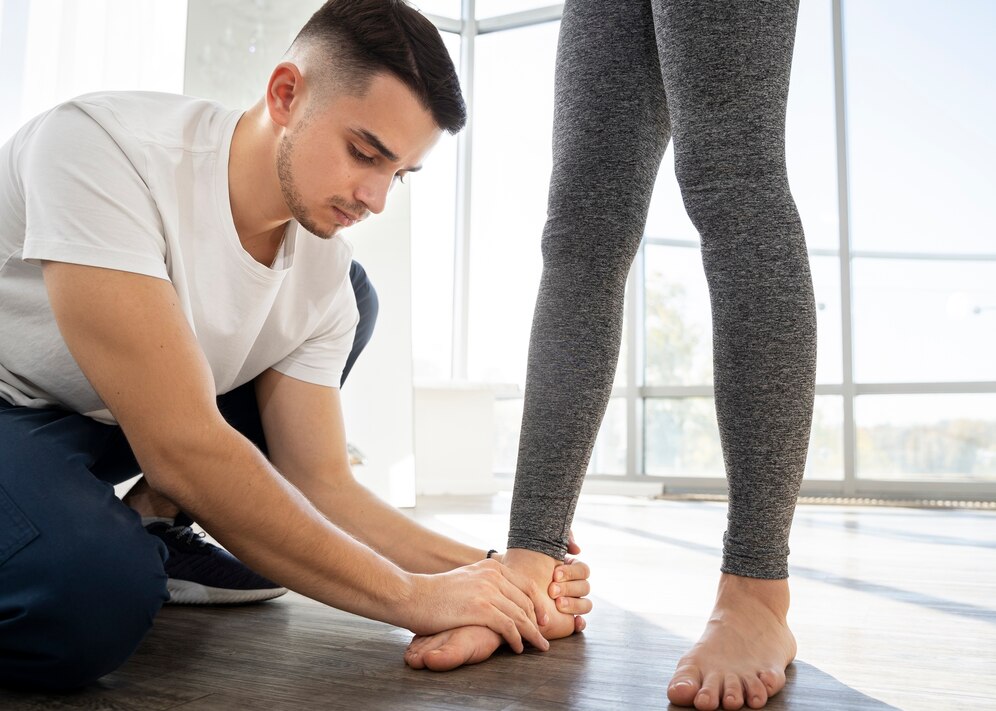
An ankle sprain is a common injury where your ankle ligaments get overstretched or pulled. The most common ankle sprain is an inversion sprain, where your ankle twists inside, leading to the rupture of the ligaments on the outside of your ankle.
The most commonly involved ligaments are the anterior talofibular ligament (ATFL) and/or the calcaneofibular ligament (CFL).
Ankle sprains vary depending on the mechanism of injury,
position of the foot, and rotational force on the joint and ligaments.
Low-grade injuries (Grade I & II) result in stretching or microscopic tears of the ligaments,
while a high-grade (Grade III) ankle sprain may result in a full tear of ligaments,
sometimes requiring a cast or brace.
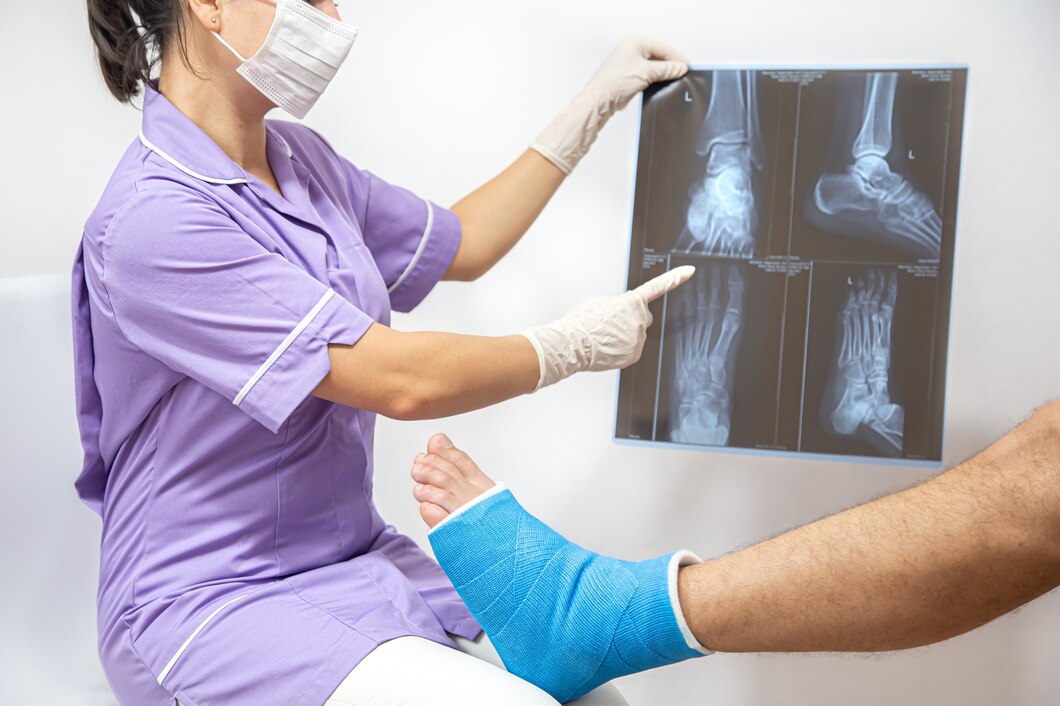
Post-Fracture Stiffness occurs when a joint or limb becomes stiff and difficult to move after a fracture due to prolonged immobilization, muscle weakness, or scar tissue formation. This stiffness can lead to pain, reduced flexibility, and difficulty in performing daily activities.
Physiotherapy plays a crucial role in recovery by incorporating gentle mobility exercises, stretching, and strengthening exercises to restore movement and prevent complications. Manual therapy, heat therapy, and ultrasound help reduce stiffness and improve circulation. Gradual weight-bearing exercises rebuild strength and function.
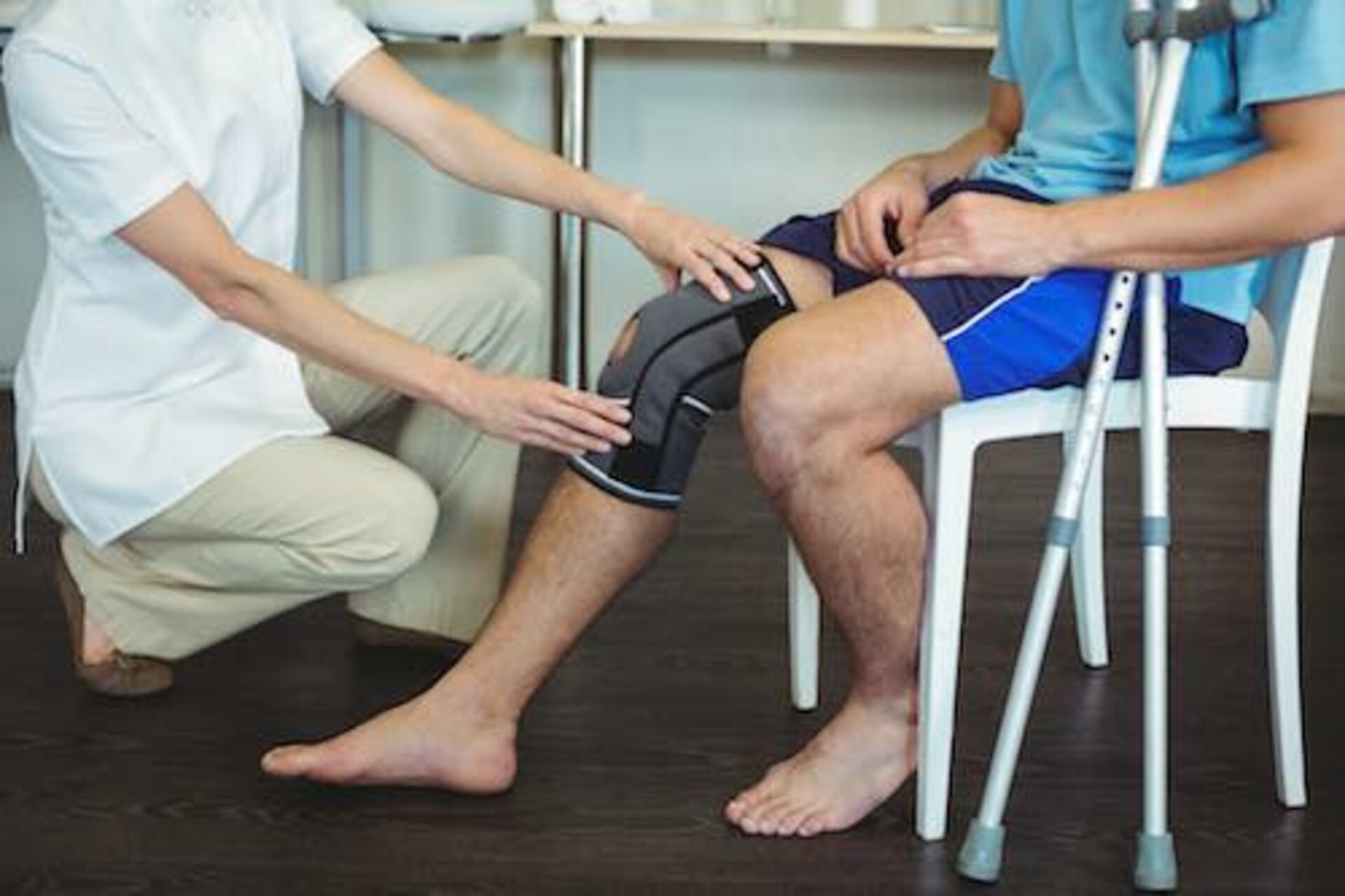
Having worked with super speciality orthopaedic surgeons like Dr. J. Maheshwari (Knee & Shoulder Surgeon ) and Dr. Vikram A. Mhaskar (sports surgeon, knee & shoulder), we have treated numerous knee surgeries cases.This allows to have a better understanding of knee and also helps us to devise customised rehab plans for varied goals of the patients. Most commonly treated knee surgeries at our centre are:

We take pride in addressing that our chief physiotherapist is among very few shoulder physio present in the north india. She has not only treated vast number of shoulder surgery cases but also provided exceptional results. We take pride in acknowledging that she has even presented her work for the most complex shoulder surgery, Reverse shoulder replacement as the only physio among 150 shoulder surgeons from india and internationally.
The most commonly treated shoulder surgeries at our centre are: